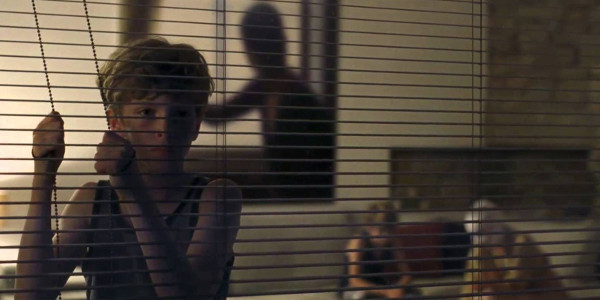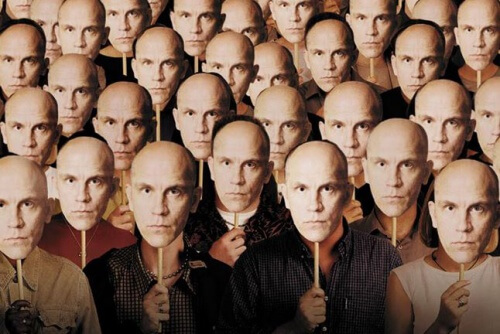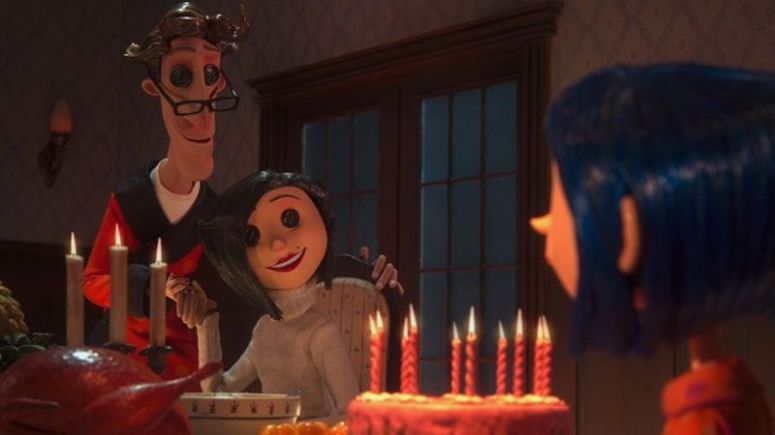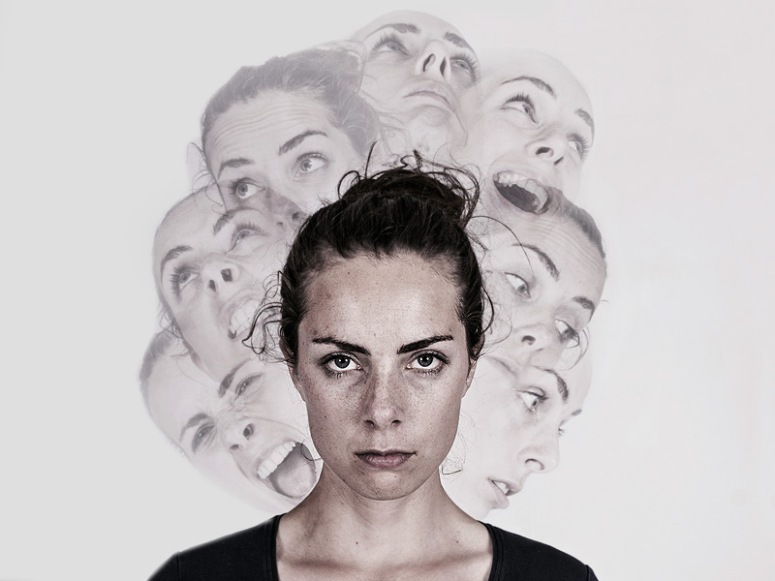Many of you have probably heard of one or more of the disorders on this list, as a disclaimer I would like to state that I do not think less of any person with these disorders and they are merely on this list due to their correlation with scary stories or events.
That being said… Enjoy!
One part of the horror genre that has always intrigued me the most is the fear of being crazy. Many of us don’t realize that we have this fear until our own sanity is actually questioned. A perfect example of a story that portrays this fear beautifully would be a short story entitled “The Yellow Wallpaper” written by Charlotte Perkins Gilman. It tells the story of a young woman who is kept in a room in an attic and eventually she starts to lose her mind and see people in the wallpaper. It’s one hell of a read and I definitely recommend taking a look if you can get your hands on it.
That being said, there are many people around the world who suffer from psychological disorders that would potentially label them as “creepy” in society’s eyes. People who suffer from everything from dementia to borderline personality disorder have been called crazy at one time or another. Today I am here to tell you about four of the scariest psychological disorders that I have come across. In no way do I mean to say that these people are crazy, but the idea of having any number of these disorders is enough to chill you to the bone.

Capgras Delusion is a rare disorder that makes a person believe that a person they know, often a friend or family member, is not who they appear to be. This disorder will make you believe that your closest loved ones are actually “imposters” disguised as people you care deeply for. Sometimes, this delusion is also aimed towards a person’s pet. It it most commonly seen in patients who simultaneously suffer from another mental illness such as dementia or schizophrenia, but is also seen in patients who have suffered a severe brain injury.
The “That’s Not My Child” case is one of the most well documented cases of Capgras Delusion in history. It follows Mary, age 40, who was brought in for a psych evaluation by Child Protective Services to see if she was fit to care for her nine-year-old daughter. Mary had repeatedly claimed to friends and family members that Child Protective Services had actually taken her daughter and replaced her with an imposter or look-a-like. On multiple occasions, Mary arrived at her daughter’s school to pick her up, but refused to take her daughter home. She was seen yelling “Give me my real daughter. I know what you’ve done.” To teachers and other parents in the general vicinity. She had even recalled seeing her daughter being kidnapped right before her eyes. As she was driving down the road, she believed that the car driving next to her, being driven by a stranger, had her daughter in the passenger seat, but as soon as they noticed Mary was there, they sped away.
Unfortunately, like most of the disorders on this list, Capgras Delusion not only effects the patient, but their families as well. Mary’s daughter told doctors, “I love my mother, except for when she doesn’t believe I’m me.”
“Goodnight Mommy” is a 2014 Austrian horror film based on two boys who both suffer from Capgras Delusion. Their mother arrives home from the hospital after receiving plastic surgery on her face, and both of the twin boys believe that their mother is not herself.

Fregoli Delusion is the exact opposite of Capgras Delusion. This is another rare disorder, this time resulting in the patient believing that everyone they encounter is in fact just one single person wearing many different disguises. The patient in this situation will also believe that this “shapeshifting” person is stalking them, with a desire to cause bodily harm.
This condition is named after Leopoldo Fregoli, a famous Italian actor who was well known for his quick changes during stage shows, changing from one character to another within seconds.
The first reported case was in 1927, when two psychiatrists found themselves treating a woman in her late 20s who claimed that she was being pursued by two actors from the local theatre company, which she often saw performances by on her nights out. She believed that they were following her closely by “taking the form” of her friends and family. She had originally reported this to the police, who called her crazy and brushed her off. When she came back time and time again insisting that her friends and family were not who they said they were, they brought her to a doctor for psychiatric evaluation.

This is the delusional belief that a single place or location has been duplicated, or exists in two entirely different places at one time. This could be anything from a specific room, to a building or even parks and entire neighbourhoods.
The first time this delusion was seen was in the most well known and studied case. A young man, who remains unnamed, was admitted to a hospital after an accident and upon waking from a coma, he was able to recall the entire incident and was also able to recognize that he was currently at the Jamaica Plain Veteran’s Hospital. But he would constantly insist that the hospital was located in his hometown of Taunton, Massachusetts, despite the fact that is was actually located in Boston.
At first, doctors figured that he was probably confused due to the current situation, and simply explained to him that he was mistaken and that this hospital was in Boston. The patient admitted that he was aware that the Jamaica Plain Veteran’s Hospital was located in Boston, but that he was in a branch of the hospital that was in Taunton, even stating at one point, that the hospital was located in the spare bedroom of his own home.
The name “Reduplicative Paramnesia” was only used starting in 1903 by Dr. Arnold Pick. He was treating a woman who was believed to have Alzheimer’s, when she started talking about how she was relocated from Dr. Pick’s downtown clinic, to an identical one in a different region. When she was asked to explain how she knew that she had been moved elsewhere, she stated that she “knew” that Pick and his staff all worked at both locations simultaneously. To her, this concept seemed entirely plausible.
This delusion is also seen in the popular Tim Burton movie, Coraline. Coraline wakes up in an entirely different universe, but everything looks the exact same as “real life”.

Schizophrenia is the most well known disease on our list, but is often seen as one of the most terrifying delusional disorders of all. This is likely due to the correlation that has been seen between this disorder and serial killers in history.
This disorder is characterized by abnormal social behaviour and an inability to understand the difference between reality and fantasy. Common symptoms of the illness include false beliefs, unclear or confused thinking, hearing voices and showing reduced emotional expression. There are hundreds of theories behind what causes schizophrenia, but very few of these theories have actually been proven. Genetics is said to play a large roll in the development of the illness, but doctors also believe that environmental factors such as being raised in a city, cannabis use, certain infections, parental age, and decreased nutrition in the womb can cause a patient to develop this disorder.
The life expectancy of someone with schizophrenia is anywhere from ten to twenty-five years shorter than the average person’s life span. This is generally due to the fact that patients with schizophrenia are much more likely to commit suicide than the average person as they usually suffer from Major Depressive Disorder and Generalized Anxiety simultaneously.
A common strand of Schizophrenia is “Paranoid Schizophrenia” which results in more auditory and visual hallucinations and a paranoid sense of being. This means that a patient may believe that they are constantly being followed, or their hallucinations are telling them that they people they are surrounded by are not to be trusted.
Some people believe that Schizophrenia has been given a negative connotation because there are numerous American serial killers who were diagnosed before or during their trials for murder. This list includes, Ed Gein, Jefferey Dahmer, Eileen Wuornos, and David Gonzalez.
This wraps up our list of Scariest Psychological Disorders for this week! If you’d like to know more about anything that I mentioned above, tweet me @kelsimarie1330 and I’ll be sure to write more about it in the future.
Until next time… Keep it spooky!

What a great post, Kesli.
While depictions of snakes on a plane and scary clowns encounters give me the chills, the ones about people losing their minds are by far the scariest. You listed a few titles I have never heard of, so I’ll have to check them out.
Thanks for sharing!
LikeLike
I love that you mentioned “The Yellow Wallpaper” — it’s brilliant and definitely one of my favourite short stories!
LikeLike